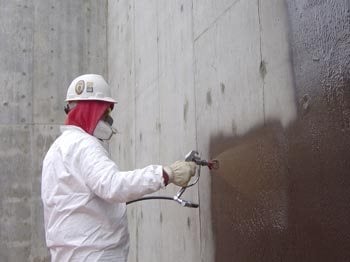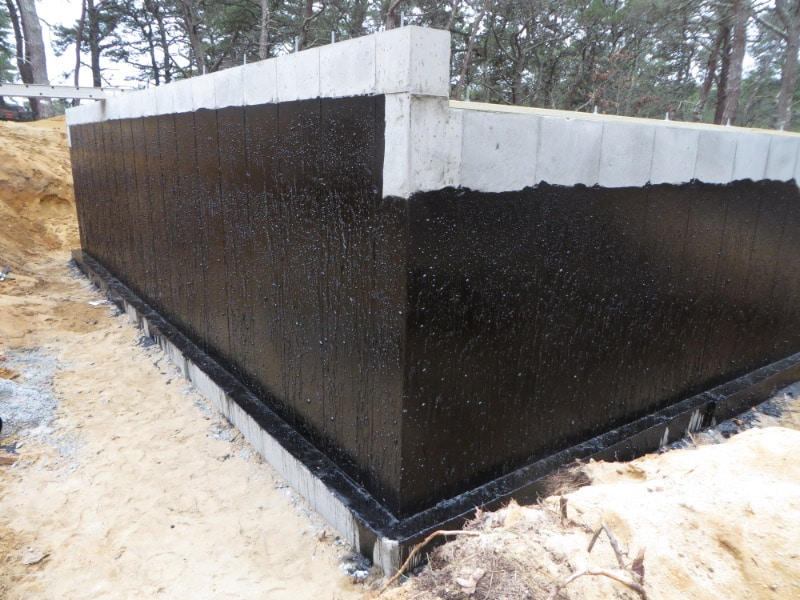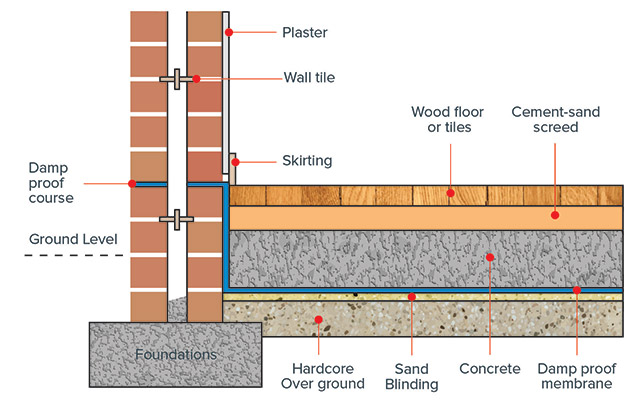What you gain from hiring a mould treatment newcastle professional
What you gain from hiring a mould treatment newcastle professional
Blog Article
Checking Out the Various Methods and Solutions for Effective Damp Proofing
Moisture in buildings presents considerable obstacles to both structural integrity and indoor air quality. Numerous strategies and remedies have emerged to combat this prevalent issue. From conventional damp-proof membranes to innovative chemical therapies, each method uses unique advantages. Comprehending these alternatives is crucial for reliable dampness control. Choosing the right service depends on certain building conditions and demands, motivating additional expedition right into the most reliable moist proofing methods readily available.
Recognizing the Root Causes Of Wetness
Although dampness can arise from numerous resources, comprehending these reasons is crucial for efficient remediation. Typically, moisture stems from 3 key resources: rising wet, penetrating wet, and condensation. Increasing moist occurs when groundwater travels upwards through permeable materials, such as block or rock, frequently due to a lack of an effective obstacle (damp proofing newcastle). Penetrating moist is commonly brought on by exterior elements, consisting of roof covering leakages, malfunctioning rain gutters, or damaged wall surfaces, allowing water to penetrate a residential property. Condensation, on the various other hand, results from excess wetness airborne, usually aggravated by bad air flow and temperature level distinctions, bring about water droplets developing on surfaces. Determining these underlying issues is vital, as each type of dampness needs a tailored technique for removal. Appropriate evaluation aids in identifying one of the most reliable solutions, ultimately protecting the structural stability of a building and boosting interior air top quality
Typical Damp-Proof Membranes

Chemical Damp-Proofing Solutions
Chemical damp-proofing options provide an ingenious method to avoid moisture breach in structures. These approaches normally include the application of liquid chemicals that pass through stonework and form an obstacle against climbing wet. Generally made use of chemicals include silanes, siloxanes, and other water-repellent representatives that react with surface products to create a hydrophobic layer.The application process generally needs boring openings into the wall surfaces, injecting the chemical solution, and allowing it to treat. This approach is particularly useful for older frameworks where traditional damp-proof membranes may be unwise. Additionally, chemical damp-proofing can be much less turbulent and extra economical than considerable renovation projects.While reliable, these options depend upon proper application and environmental problems for peak efficiency. Normal upkeep and monitoring are necessary to ensure the long life of the damp-proofing treatment. In general, chemical damp-proofing stands for a functional option for safeguarding structures against moisture-related damages
Tooth Cavity Wall Building Strategies
Cavity wall surface building and construction techniques supply various advantages, particularly in wetness control and power efficiency. By including an air gap in between 2 layers of masonry, these wall surfaces successfully minimize water access while improving insulation. This combination not only safeguards frameworks from dampness yet additionally adds to decreased power consumption.
Advantages of Tooth Cavity Walls
When thinking about efficient moist proofing techniques, the advantages of tooth cavity wall surfaces stand out plainly. Dental caries wall surfaces contain 2 different layers, creating an air void that properly decreases wetness penetration. This design decreases the danger of dampness, as the outer wall acts as a barrier against rain and water ingress. Furthermore, dental caries wall surfaces improve thermal insulation, which adds to power efficiency by reducing warmth loss. They also supply audio insulation, aiding to create a quieter indoor setting. Moreover, the air gap permits air flow, which assists in moisture control and minimizes the likelihood of mold and mildew development. These benefits not only improve the general convenience of a structure however also add to its long life and architectural stability.
Moisture Control Methods
Effective moisture control approaches are crucial in cavity wall building to assure long-term defense versus moisture. One primary technique involves the consolidation of weep holes, which help with water drain from the dental caries, avoiding accumulation. Additionally, making use of breathable membranes can assist take care of wetness levels while permitting trapped vapor to leave. Appropriate positioning of insulation is also critical, as it should not block water drainage courses. Making certain that the outer fallen leaves of the tooth cavity wall are constructed with water-resistant materials boosts general sturdiness. Routine upkeep checks are vital to identify any kind of clogs or damage early, safeguarding the structure's honesty. Inevitably, a mix of these methods creates a durable protection versus wetness invasion in cavity walls.
Insulation and Power Efficiency
Insulation plays a crucial function in enhancing energy performance within cavity wall surface building. By integrating protecting materials, these wall surfaces create a thermal obstacle that reduces warm loss and lowers power consumption. Reliable insulation not just helps keep a steady indoor temperature level however additionally reduces the risk of dampness, as it avoids condensation within the wall cavity. Numerous strategies, such as using stiff foam boards or mineral woollen, can be employed to achieve perfect insulation efficiency. Additionally, appropriate setup is vital to assure that gaps and voids are lessened, which can otherwise compromise energy efficiency. Inevitably, a well-insulated tooth cavity wall surface adds substantially to general sustainability and decreases home heating and cooling costs for property owners.
Exterior Damp Proofing Techniques
Outside wet proofing techniques are essential for securing frameworks from dampness infiltration. 2 efficient techniques include the application of water resistant membranes and the installment of French drains. These options aid mitigate water build-up and preserve the stability of buildings.
Waterproof Membrane Layer Application
While different approaches exist for protecting against wetness ingress, the application of waterproof membrane layers stays an extremely reliable outside damp proofing strategy. These membrane layers are usually made from materials such as polyethylene, rubber, or modified asphalt, giving a durable barrier against water penetration. The installation procedure entails using the membrane layer to the external surfaces of wall surfaces or structures, making sure total coverage to stop leakages. Proper bond and securing at joints are critical to making best use of performance. Water resistant membranes can be used in different forms, consisting of liquid finishes and sheet membranes, allowing for flexibility based upon the particular needs of the framework. This approach not just protects structures from moisture however also boosts their longevity and architectural stability.
French Drainpipe Installment
One effective method for managing groundwater and avoiding moisture build-up around a building's foundation is the setup of a French drainpipe. This drain system includes a trench filled with crushed rock and a perforated pipe that redirects surface area water far from the structure. Correct installation requires mindful preparation, guaranteeing that the drainpipe slopes far from the structure to help with perfect water circulation. Furthermore, the place of the drainpipe is important; it should be placed in locations prone to pooling or excess moisture. Normal upkeep, consisting of clearing up particles from the gravel and making sure the pipeline continues to be unblocked, is vital for long-term performance. Ultimately, a well-installed French drain can considerably decrease the risk of water-related issues in basements and foundations.
Inside Waterproofing Techniques
Inside waterproofing approaches are important for safeguarding a structure's inside from wetness seepage and potential water damages. These approaches usually entail the application of specific products and techniques developed to create a moisture barrier within the structure. One typical technique is the usage of water resistant finishings or sealants on walls and floors, which prevent moisture from passing through surfaces.Additionally, mounting interior drain systems, such as sump pumps, can successfully handle water accumulation in cellars and creep rooms. Another approach involves the usage of vapor barriers, which are mounted to prevent wetness motion from the ground right into living spaces.Moreover, dealing with any kind of splits or voids in wall surfaces or structures with appropriate sealers ensures a thorough defense against water intrusion. By implementing these indoor waterproofing approaches, homeowner can greatly reduce the click here risk of mold and mildew development, architectural damages, and other moisture-related concerns. Correct implementation of these techniques is vital for long-lasting defense and building integrity.
Normal Upkeep and Assessment Practices
Routine maintenance and evaluation methods are crucial for ensuring the long-lasting efficiency of moist proofing services in any kind of structure. Regular checks allow home owners to determine early signs of dampness intrusion, such as peeling off paint, mold development, and stuffy odors. These indications can signify underlying problems that call for prompt attention.Inspections need to be conducted a minimum of each year, concentrating on vulnerable areas like cellars, creep spaces, and outside wall surfaces. Throughout these assessments, property owners need to take a look at sealers, water drainage systems, and air flow to confirm they operate correctly.Additionally, keeping downspouts and gutters is crucial, as blocked systems can lead to water buildup near the structure. Applying a normal upkeep timetable, along with timely repair services, can substantially expand the lifespan of wet proofing measures and protect the structural stability of the structure. Positive procedures eventually add to the general health and safety of the living environment.
Often Asked Concerns
For How Long Does Damp Proofing Commonly Last?
The period of damp proofing performance differs, usually lasting in between 20 to 50 years. Variables such as application quality, environmental problems, and maintenance techniques considerably influence the long life of the wet proofing therapy.

Can I Damp Proof My Home Myself?
The specific contemplated the expediency of DIY damp proofing. With correct study and the ideal materials, it is feasible. Nonetheless, they also recognized the relevance of specialist assistance to guarantee lasting performance and protect against future concerns.
What Are the Signs of Inefficient Damp Proofing?
Indications of inefficient damp proofing include consistent musty odors, visible mold growth, peeling paint, wet spots on wall surfaces, and timber degeneration - damp specialist newcastle. Home owners ought to deal with these issues promptly to avoid additional damages and health and wellness problems
Does Damp Proofing Affect Indoor Air High Quality?

Just How Much Does Expert Damp Proofing Expense?
Expert wet proofing prices differ substantially, commonly varying from $1,000 to $5,000 depending on the residential or commercial property's dimension, the level of the damp problem, and picked approaches. Each circumstance needs a tailored assessment for precise rates. Frequently, moisture stems from 3 primary sources: climbing moist, passing through damp, and condensation. When taking into consideration effective wet proofing approaches, the benefits of tooth cavity wall surfaces stand out prominently. External wet proofing methods are essential for protecting frameworks from moisture infiltration. While numerous techniques exist for stopping dampness ingress, the application of water-proof membrane layers stays a very efficient exterior damp proofing method. Signs of inefficient moist proofing consist of persistent moldy odors, visible mold growth, peeling off paint, moist spots on wall surfaces, and wood decay.
Report this page